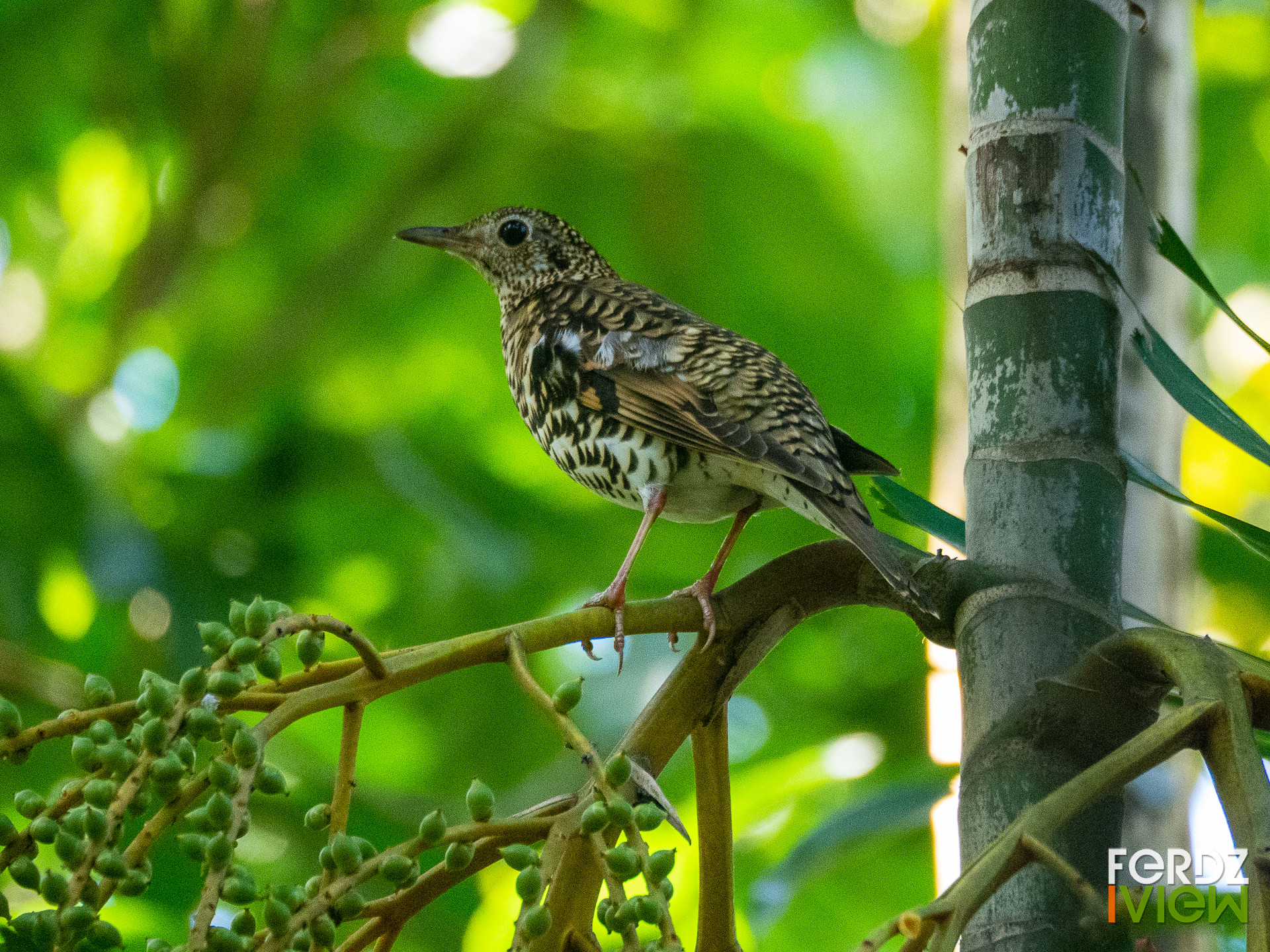Since the start of the year, my facebook timeline had been bombarded by photos of this scaly white bird found at the La Mesa Eco Park in Quezon City. It’s the White’s Thrush, my birding friends label. A fascinating migrant bird temporarily making the mini-forest of the park as its home. Last weekend, I finally got to personally encounter this global-traveling thrush when birding friends Allan, Czer, Romz and Edwin organized a sortie at the La Mesa Eco Park. I didn’t have a teaching schedule that day so I happily obliged.
La Mesa Eco Park
The 33-hectare eco park is situated within the 2,700-hectare La Mesa Watershed, one of the primary source of drinking water in Metro Manila and the last vestige of forest within the city. The park is the only accessible area for the public. If it’s already teeming with bird (Wild Birds Club of the Philippines recorded around 90 species), what more in the whole watershed.
We came in the park before sunrise and already, we could hear many birds calls signaling their activity. After checking the lagoon or river area, we headed to the mini-forest area where bulk of the birds can be found.
White’s Thrush
While we found a number of birds, part of why I visited there was to see the White’s Thrush. Some birders may call it “target bird” but there’s something about the term that I didn’t like. I’d rather use “encounter” or “priority”. And I wasn’t disappointed. The first time the White’s Thrush showed itself, it was only for a few minutes.
Then going for a short path up a hill I found another fruit-bearing trees. I heard a some camera shutter taking shots in burst mode and came to inspect. He was shooting at the White’s. The White’s was on the berry branches and seems to be oblivious of us. I took as many shots and videos as I can. But he seems comfortable there. Preening even after snacking on a few berries. I took my time just to watch him/her.
Legacy from the Pioneer Birdwatcher
Reading more about it, the White’s Thrush is a fascinating migrant bird, widely seen in Siberia and Asia but can be found in Europe and even Scotland where it is rarely seen. That it even made news when a wildcat camera trap caught a snap of the White’s Thrush tells of its rarity in the area.
In fact, White’s Thrush name came from a British ornithologist, Gilbert White, a parson-naturalist best known for his work “Natural History and Antiquities of Selborne”. White’s greatest contribution to the world is that he was known as “the man who started birdwatching”. Encouraging people to “watch birds” instead of killing or hunting them for food. To observe its behaviours and it’s migratory patterns that can help predict the state of the environment and weather.
Though the White’s Thrush was named after Gilbert White, he never got to see the species of bird he was named after. The thrush was accidentally shot and discovered in Christchurch (Dorset) January 1828, 25 years after his death. Young White’s Thrushes have a unique “reverse migration” behaviour which would explain how it ended up in England. Recognizing the bird was unique, it was sent to Thomas Eyton, who named the bird to his ornithological hero, Gilbert White.
(Historical reference from the book Mrs Moreau’s Warbler, How Birds Got Their Names by Stepen Moss)
Birding for Conservation
Learning from the White’s Thrush story, we can tell that each bird has a story to tell. I’ve been shooting birds for quite a while but the White’s Thrush teaches people that there’s more to birdwatching. Every single bird in a habitat is as important as the rare ones. There’s a reason why they are there. While I found photographing birds as an enjoyment, especially the rare and colorful ones, lately I look at them as beacons of the environment. I’d rather see any type of bird than none. It can be alarming if I don’t see even the most common pipit.
So FerdziView will be transitioning content. Expect a lot of my amateur birding chronicles and photography on this site. As well as more photography and video content. It will cover a few wellness topics as well. So I hope you follow me on my journey here.
IG: @ferdziview
FB: /FerdziView/
YouTube: FerdzDecena







Leave a Reply